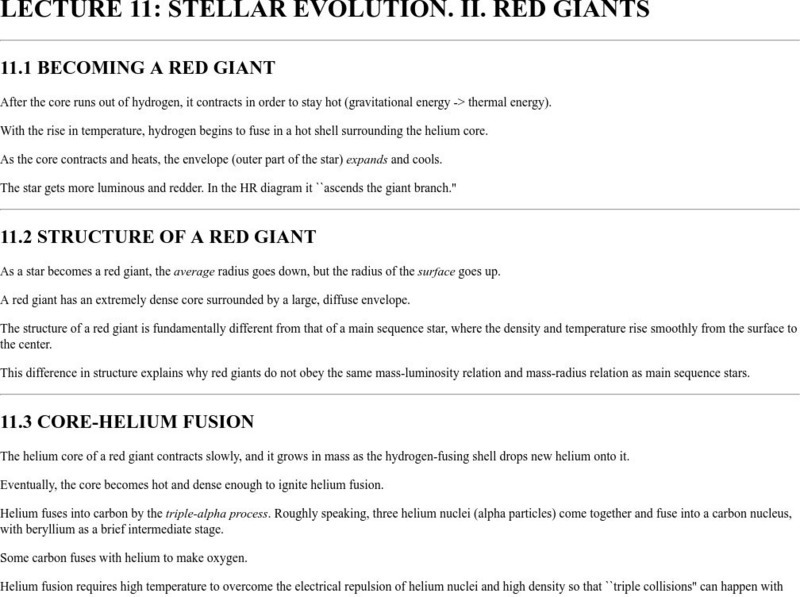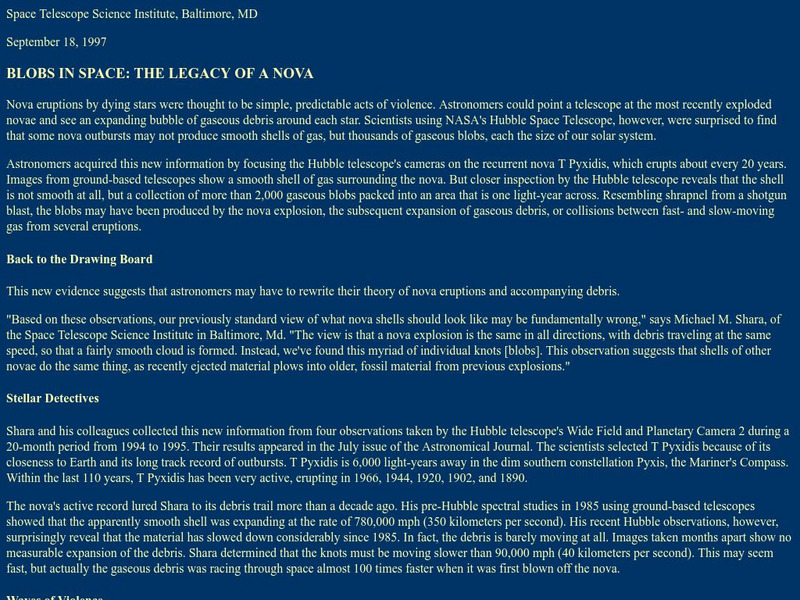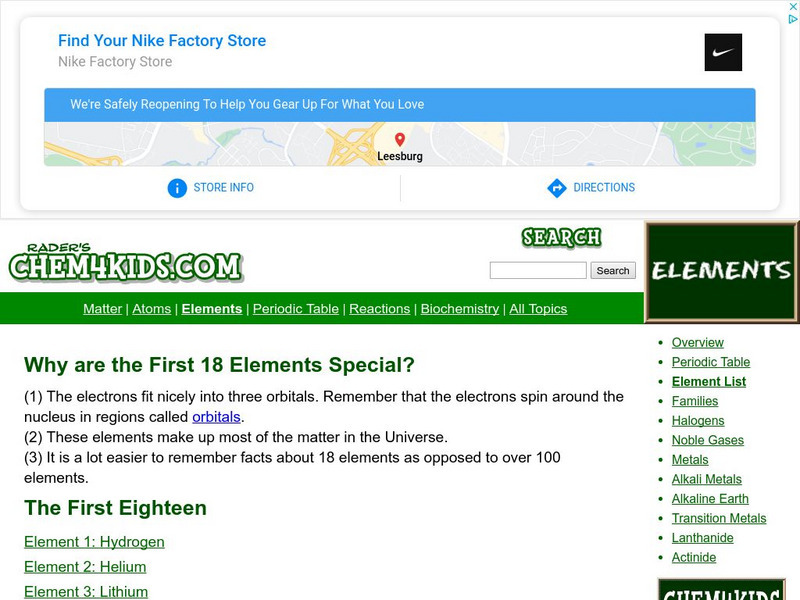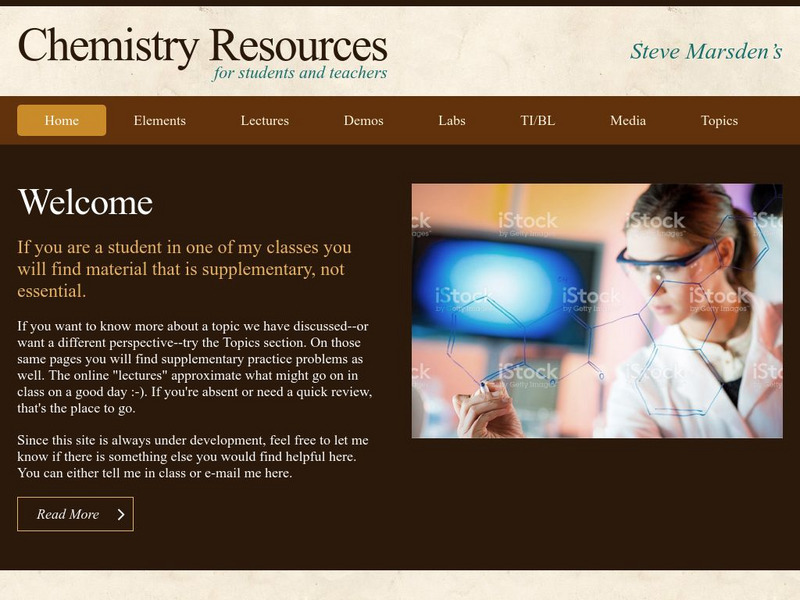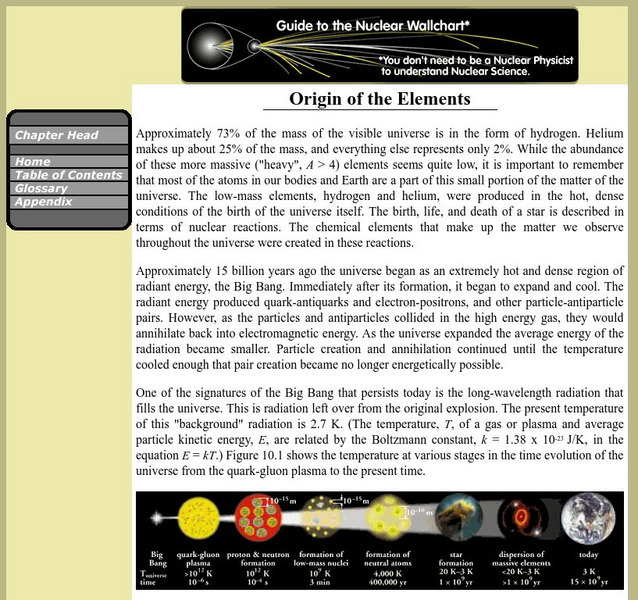Hi, what do you want to do?
Ohio State University
Ohio State University: Red Giant Star Lecture Notes
Describes how a star becomes a red giant, the structure of a red giant, core-helium fusion, lifetime predictions, and the position on the HR diagram.
NASA
Nasa Space Science Data Archive: Galileo Project Information
This is the homepage of all of the archived information about and from the Galileo Mission. Included is data from the flybys of Venus, Earth, Moon, and Asteroids Gaspra and Ida, as well as the current data from Jupiter and its moons. See...
Upper Canada District School Board
Tom Stretton's Chemistry Pages: The Noble Gases
Through an online slideshow format, learn about the chemical properties and practical uses of the noble gases. Includes questions at end.
US Department of Energy
Fus Ed Web: Physics of a Fundamental Energy Source
An excellent resource on nuclear fusion! Using incredible graphics and excellent discussion, this site (with its several pages) provides an exhaustive online course on the topic. Click on the link for "a Guided Tour" and begin.
Georgia State University
Georgia State University: Hyper Physics: Speed of Sound
Physics tutorial on measuring the speed of sound in dry air. An interactive form allows the student to practice solving problems involving the temperature dependence of the speed of sound.
Other
Virtual Chembook: Density Applications With Gases
DENSITY is a physical property of matter, as each element and compound has a unique density associated with it. Density defined in a qualitative manner as the measure of the relative "heaviness" of objects with a constant volume. For...
Nobel Media AB
The Nobel Prize: Otto Stern Biographical
This is a brief biography on the life and scientific work of Otto Stern, a physicist honored with the Nobel Prize in physics for his "development of the molecular ray method and his discovery of the magnetic moment of the proton."
Khan Academy
Khan Academy: Ideal Gases in Medicine
This passage tests your knowledge on the kinetic molecular theory of gases using the five-question quiz.
Other
Astronet: Blobs in Space: The Legacy of a Nova
The expansion and explosion of a star is described at it goes through its nova phase. Current theories are discussed.
PBS
Pbs Learning Media: Buoyancy Brainteasers: Balloon in Car Puzzler
This interactive brainteaser from the NOVA: "Voyage of Doom" Web site challenges you to explain the behavior of a helium-filled balloon in a moving car.
Ducksters
Ducksters: Astronomy for Kids: Stars
Kid's learn about the science of stars like our Sun. Giant hot balls of gas and energy made mostly of hydrogen and helium.
CK-12 Foundation
Ck 12: Chemistry: Noble Gases
[Free Registration/Login may be required to access all resource tools.] Covers electronic configuration of noble gases and the reactivity of noble gases.
Chem4kids
Chem4 Kids: Element List
Site provides the first 18 elements found in the Periodic Table. Click on an element to discover where it is found and what it's characteristics are.
Other
The Elements: Noble Gases
A listing of the noble gasses can be found here as well as images and links to additional information. This site is maintained by a high school chemistry teacher but is supplemented with information from the Los Alamos National...
Science Struck
Science Struck: Noble Gas Configuration
Provides the configuration for each of the six noble gases and explains how to write noble gas configurations. Also explains what pseudo-noble gas configuration is.
Concord Consortium
Concord Consortium: Nonbonding
Bring two molecules together and observe potential energy changes.
Lawrence Berkeley National Laboratory
Berkeley Lab: Origin of the Elements
Discussion of the creation of the chemical elements that make up the matter we observe throughout the universe.
Science Struck
Science Struck: Facts About Noble Gases
Learn how noble gases were discovered, what their properties are, and their uses. Includes a chart listing the six noble gases and some details about them.
Wyzant
Wyzant: Common Elements
This website focuses on the common elements. It provides an alphabetical listing of each common element with its symbol, attributes, and location on the periodic table.
Other popular searches
- Helium Balloons
- Helium Gas
- Balloon Helium
- Properties of Helium
- Helium Gases
- Hydrogen and Helium
- Helium Float
- Hydrogen Helium
- Helium Balloon and Gravity





